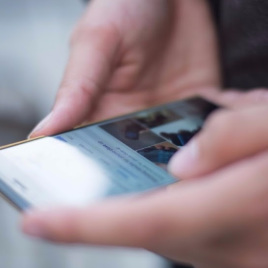
The brain-spine interface uses a brain implant like this one to detect spiking activity of the brain’s motor cortex. Grégoire Courtine holds up a microelectrode array and a silicon model of a primate’s brain. (Image by Alain Herzog / EPFL)
A new device can get a paralyzed monkey back on its feet and walking, less than a week after a spinal cord injury. The device acts as an interface between the brain and the spine. It helps deliver signals from the motor cortex to electrodes implanted in the lower part of the spinal cord. But for the first time ever, a team of scientists were able to use the brain-spine interface not only for signal transmission, but also to restore movement necessary for walking – in some cases, as quickly as a week after the initial injury. Researchers hope that this helps lay a path for similar research in human rehabilitation in spinal cord injuries.
Authors:
Marco Capogrosso, Tomislav Milekovic, David Borton, Fabien Wagner, Eduardo Martin Moraud, Jean-Baptiste Mignardot, Nicolas Buse, Jerome Gandar, Quentin Barraud, David Xing, Elodie Rey, Simone Duis, Yang Jianzhong, Wai Kin D. Ko, Qin Li, Peter Detemple, Tim Denison, Silvestro Micera, Erwan Bezard, Jocelyne Bloch & Grégoire Courtine
Corresponding author:
Grégoire Courtine, Swiss Federal Institute of Technology (EPFL), Lausanne, Switzerland
Original paper published in Nature on November 9, 2016.

